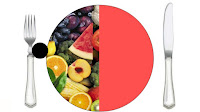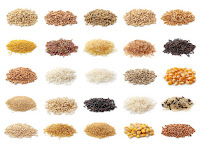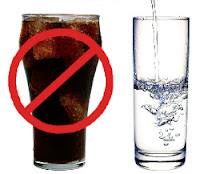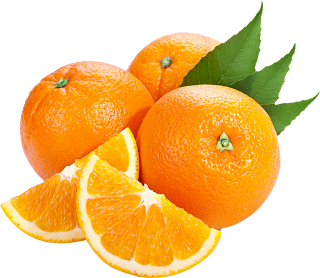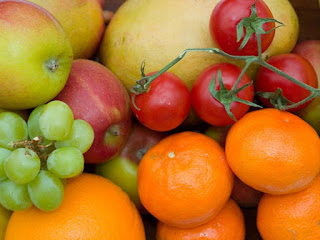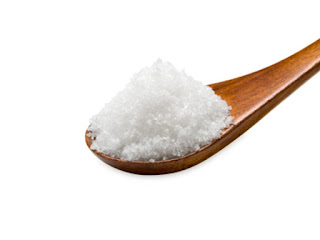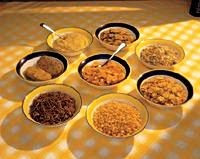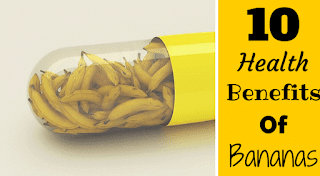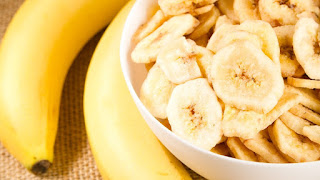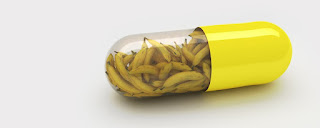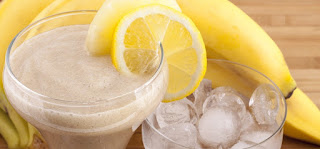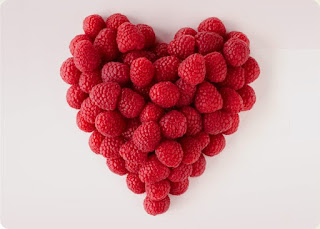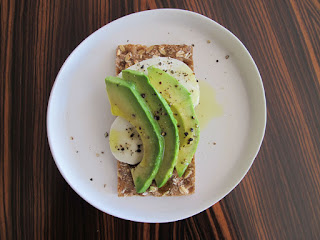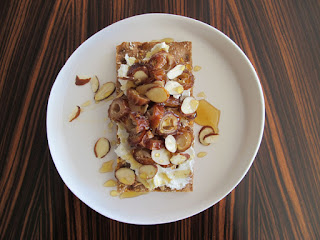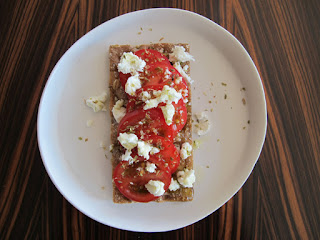Raspberry is delicious and lovely looking fruit is from genus Rubus, which comes from Rose family. It blooms throughout the year and is thus perennial in nature.
However, in olden days, it was a summer crop that has now been modified by technology to produce all round the year.
Raspberries are grown in most of the temperate regions of the world and Russia is the largest producer followed by Poland.
Today they are available in many hybrid forms and have numerous varieties that include Red Raspberries, Purple Raspberries, Black Raspberries, blue Raspberries and golden Raspberries.
There are about 15 species of this fruit that are cultivated across many countries and continents of the world.
Raspberries are very popular and are known for their nutritious character. This write up will give you a detailed account of why
Raspberries is recommended and a “must” in your daily fruit intake.
Raspberry Nutritional Value
Raspberries are among the healthiest fruits and are super beneficial for your health. It has dense nutrient content which includes
Antioxidants, Phytonutrients, Fiber, Iron, Magnesium, Potassium, Zinc, etc.
The following chart enumerates the complete nutritional composition of 100 grams serving of Raspberries:
- Energy 53 Kcal
- Carbohydrates 11.94 gms
- Sugar 4.42 gms
- Dietary Fibre 6.5 gms
- Fats 0.65 gms
- Protein 1.20 gms
- Vitamin B1 0.032 mg
- Vitamin B2 0.038 mg
- Vitamin B3 0.598 mg
- Folate 21 ug
- Vitamin B6 0.055 mg
- Vitamin K 7.8 ug
- Vitamin C 26.2 mg
- Vitamin E 0.87 mg
- Choline 12.3 mg
- Calcium 25 mg
- Magnesium 22 mg
- Iron 0.69 mg
- Phosphorus 29 mg
- Potassium 151 mg
- Manganese 0.67 mg
- Zinc 0.42 mg
Amongst the nutrients, Raspberry has the highest proportion of Vitamin C on the scale of our body’s daily requirement of nutrients. It can provide about 32% of Vitamin C required by us.
Raspberries also boast of the high amount of dietary fiber with a reasonable level of sugar in it. Manganese is another component in Raspberry that fulfills about 32% of our daily requirement.
Apart from these three, rest of the nutrients in the form of Vitamins, trace metals and proteins are moderately contained in this fruit constituting 2% to 4% of our daily need.
This juicy fruit is made up of 95% of water, one of the highest water content in fruits.
Raspberry Health Benefits
As evident from the nutrition chart, Raspberries are very healthy.
They are useful in preventing damage to DNA of our cells from free radicals thereby protecting from many health problems like cancer, macular degeneration, cardiovascular health, premature ageing and many more.
It is also known for its positive effects on improving eye vision, immunity, blood formation and promoting healthy weight loss.
In this section we will introduce all health benefits of this wonderful fruit and why it works to improve your health.
1. Increases Immunity and slows down ageing
Vitamin C are water soluble vitamins that are essential for your body. They need to be restored and replenished regularly as they are not stored in our body cells.
As mentioned earlier, Raspberry is a rich source Vitamin C. Vitamin C increases general immunity to fight cold, flu, infections and such other common diseases and conditions.
Vitamin C is a rich antioxidant agent and highly effective in purifying and cleaning our blood and cells that make the immune function strong.
It gets rid of the free radicals produced in our body by certain molecules on exposure to oxygen. These radicals can damage the cells and our DNA structure if not controlled and cleaned out.
The formation of free radicals is natural and is taken care of by the antioxidants produced in the body by the food that we consume.
Other than Vitamin C, the antioxidant property of Raspberries is owing to phenols and anthocyanins in them.
Organic Raspberries have been found to be particularly effective as an anti-oxidant thereby slowing down the process of ageing as well.
Early ageing is common due to increase in pollution, exposure to UV rays, unhealthy lifestyle and persistent stress. But raspberries are rich in antioxidants that neutralize these free radicals.
Thus, it protects the body from free radicals that cause ageing and gives you a great looking taut skin as well.
2. Protect and arrests Cancerous Growths
The incidences of the Cancer is increasing but now with new advancements and studies on it, this condition may not spell doom for you anymore.
The researchers on food and nutrition for controlling cancer and preventing it are showing a lot of promise. One such elaborate study has been done by Dr. Daniel Nixon of Hollings Cancer Institute.
It has found conclusively the effects of Ellagic acid in Raspberries on Cancer. A cup of Raspberries contains about 40 mg of this acid. When consumed in moderate quantities, it prevents the occurrence of cancers.
If Cancer patients increase the concentration of this acid by increasing the daily intake of raspberries, then they may be able to destroy the cancerous growths through a process called Apoptosis.
Apoptosis in layman’s language means programmed cell death owing to a biochemical reaction. The acid in Raspberries triggers this process.
It has been found to be effective in most of the cancers including that of the breast, colon, pancreas, Esophagus, skin, prostrate amongst others.
The best part is that this process does not hurt or damage normal cells and slow down the cancer growth significantly.
Apart from a big contribution from Ellagic acid, the antioxidant properties of Raspberries also help in aiding cancer prevention and growth.
Antioxidants neutralize these free radicals and protect from cancer. ORAC value (Oxygen Radiance Absorption Capacity) of raspberry is 4900 micromoles per 100 grams.
So it is useful in protecting against cancer and tumor.
Wrap up: The Ellagic acid in particular and Anti-oxidants in general found in Raspberries prevent cancer and slows down its spread in the body.
3. Maintains Eye Health
Eating raspberry improves vision and prevents the eye and retina from infections and other natural damage.
Since raspberry is rich in antioxidants, it protects the eye retina from oxidative stress. So it is effective in preventing the loss of eye vision in the form of cataract or age-related degenerative eye disease macular degeneration.
The combination of anti-oxidants like Vitamin C and phenols ward off disease and safeguard the membranes of the eye that produce the watery fluid thereby cleaning and protecting the eye from “Dry Eye” syndrome.
It reduces the risk of pannus formation that is a layer of granulation tissue which forms on the cornea.
The Ellagic acid has also been found highly effective in the upkeep of eye health and vision.
It reduces the production of active oxygen in the body which has been associated with an increase in the formation of free radicals. These free radicals can damage the vision beyond repairs in more serious and advance cases.
Wrap up: The anti-oxidants and Ellagic acid prevents age related degenerative eye disease and improve vision. They also protect from eye infections and general eye diseases.
4. Controls Inflammation
Raspberry is rich in phytonutrient, antioxidants and tannins that prove effective to prevent inflammation of stomach, intestine, bones and cardiovascular system.
Studies have conclusively associated Red Raspberries with lowered incidents of inflammation in the body.
It controls the degeneration of collagen that is the main protein in the connective tissue of the human body and thus necessary for cell repair and healing.
Other than healing, repairing and reducing pain, Raspberries have been found to contain the severity of arthritis. They control the bone resorption that release the minerals from bone into the bloodstream.
An excessive uncontrolled resorption in arthritis patients make their bones brittle, soft and lowers its density.
It also inhibits the cartilage damage and thereby reduces the inflammation of bones and joints.
Wrap up: The anti-oxidants, tannin and phytonutrients in Raspberry reduce inflammation and aid in healing and repairing cells. It also brings a lot of relief to arthritic patients by reducing pain and maintaining good bone health.
5. Diabetes Management
Raspberries have reasonable sugar content and are high on dietary fiber that makes them a relatively safe addition to the diet of diabetics.
Raspberry stimulates the body to produce an Adiponectin to maintain sugar and insulin level in type 2 Diabetes patients.
Adiponectin is a protein that is responsible for glucose breakdown in our body. The synthesis of glucose leads to its absorption and prevents high levels of undigested sugar being circulated in the blood.
Thus, it prevents the spike of blood sugar level in diabetes patient and prevents complications due to sugar level spike.
Further, the natural sugar in Raspberries called fructose does not need insulin for metabolism. Therefore, diabetics with Type 2 diabetes do not have to worry about the elevated sugar levels in the blood after consuming them.
The Glycemic index of the fruit which reflects its ability to increase the Glucose in blood is below 40 for raspberries making them extremely healthy and ideal for diabetics.
Wrap up: The Fructose, high fiber and low glycemic index of Raspberries does not increase the sugar level of the blood and make for great sweet treat for diabetics.
6. Healthy Weight Loss
First things first, Raspberry has an extremely low-fat content but high fiber that keeps you feeling full for longer.
The water content of Raspberry at 95% protects you from dehydration owing to heavy exercises.
The entire composition of trace metals including manganese, potassium and Phosphorus restore the lost balance of electrolyte in the body.
It is a low-calorie fruit which keeps you light and makes for a good before and after workout snack.
Further, Raspberry Ketones found in the raspberry have been found to be effective in burning the fat stored in the abdominal region by many studies.
These studies showed that it breaks down the lipid within fat cells. Thus, this reduces the fat deposits in the body.
It has also been found that Raspberry Ketones reduces the capacity of the body to absorb excess fat. It burns fat naturally and promotes healthy weight loss.
Wrap up: Raspberry due to its nutritional composition makes for a great snack while on weight loss spree and the Ketones in it breakdown fats reducing the waistline of your body.
7. Blood circulation & cardiovascular health
Raspberry has the anti-coagulant property that makes it a great blood thinner. In critical cases where patients experience fluctuating blood pressure and excessive clotting,
Raspberries are recommended as a part of their regular diet. They not only discourage clotting but also dissolve clots maintaining the fluidity of the blood.
It is the Salicylate content in the Raspberries that makes it an effective blood thinning agent.
An optimum fluidity of blood and regular heartbeat ensure healthy cardiovascular system. The potassium in Raspberries ensures optimum muscle function in the body including the heart muscles.
It reduces the chances of arrhythmia and regulates the contraction and expansion of heart muscles optimizing the blood pumping through the body.
Berries, in general, are also known for increasing the HDL (high-density lipoproteins) aka good cholesterol in the body-bettering the heart function further.
Wrap up: Raspberries act as natural blood thinning agent, promotes healthy cholesterol and optimizes heart function making it excellent for blood pressure and cardiovascular health.
8. Women’s health
Women love raspberries and now they have more than the “tasty” reason to include them in the diet.
Raspberries and particularly raspberry leaf have been found very effective in decreasing menstrual flow and cramps during the menstrual cycle, reducing pain during childbirth, preventing hemorrhage and relieving nausea.
It reduces pain by tightening and strengthening the pelvic muscles that experience cramping during periods. They soothe the body by relaxing muscles and reduce the stress. It also increases the milk flow in lactating mothers.
The leaf and fruit contain Carotenoids, Citric Acid, Fragrine and vitamins that make it a potent agent for menstruation and child birth-related conditions.
As mentioned earlier, it also helps in the treatment of Cervical cancer by kick-starting the process of Apoptosis in the cancerous growth.
Wrap up: Raspberries are helpful in regulating menstrual cycle, reducing cramps and pain during periods and brings down the risk of hemorrhage. It increases the flow of milk in lactating mothers and helps in treatment of cervical cancer.
Words of Caution
People who are taking medicines for blood thinning must speak to their doctor before including Raspberries in their diet. This is because Raspberry also contributes to anti-clot and anti-coagulation in the body and may interfere with the drugs.
Raspberry Ketones tend to react with other weight loss supplements, and therefore, a complete knowledge must be gained before you go on weight loss regimen using Ketones and supplements as well.
Always look for “Natural Ketone” supplements for
weight loss. “Blended Ketones” means that it is synthetically prepared and so can be harmful.
You might also like: Health and Nutrition: 10 Health Benefits of Bananas


